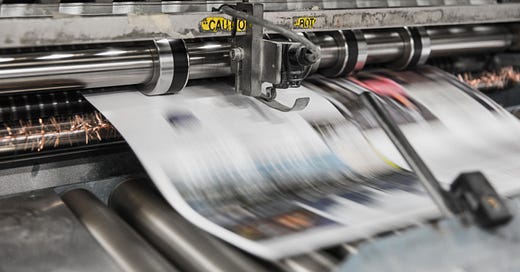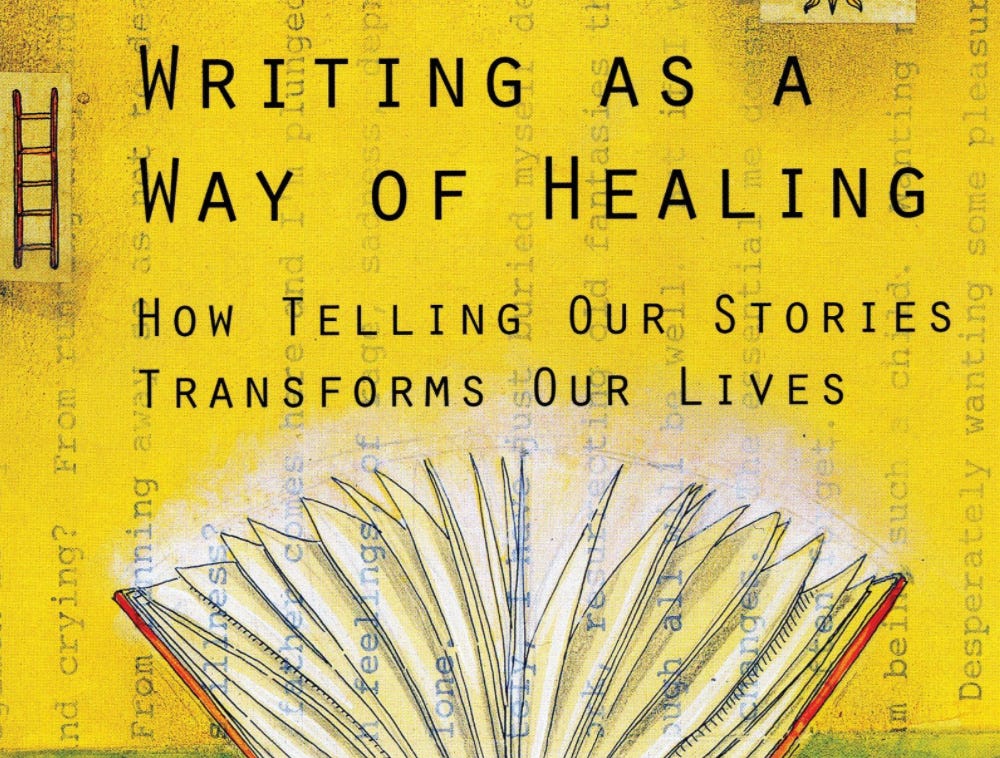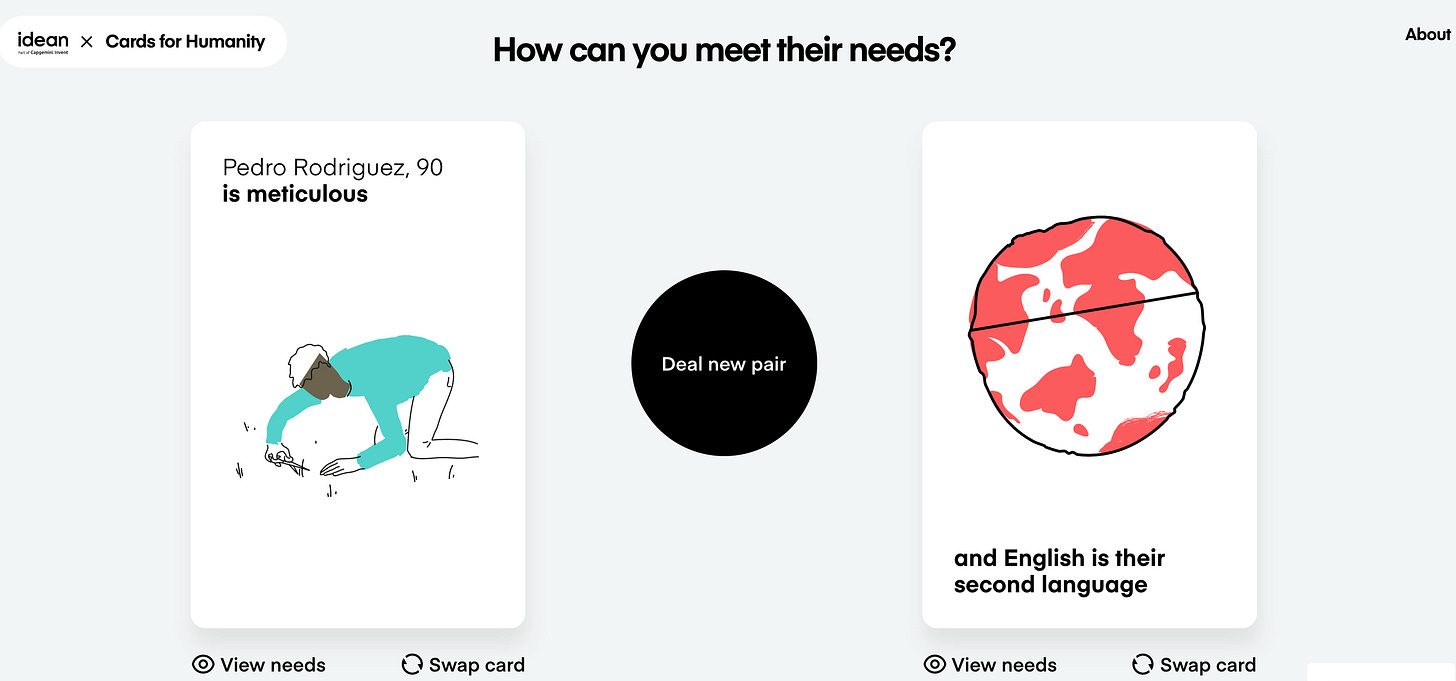Hi there! 👋 I’m Ida, and this is tiny driver, a newsletter about research, pedagogy, culture and their intersections. Thank you for being here. Reach out anytime by just hitting reply, I love hearing from you.
Hello, and welcome to another issue of Au-Guest. This week’s post is from journalist Jihii Jolly. I learned about Jihii’s work earlier this year, and I fell absolutely in love with her ability to explain how we consume information in the modern day. I’m so excited to share her work with you all, as it is so critical to the ways our emotions are tied to our news consumption. I know that this past week has been particularly difficult in terms of international news, so perhaps Jihii’s writing can help us sustain our movements forward.
Hello, all!
I’m Jihii Jolly, writer of Time Spent, which is a weekly newsletter on how to be more intentional with our time, especially the hours we spend on news consumption and care.
These are the underlying issues that drive most of my independent work, but if I were at a party, I would say I’m a journalist who focuses on media, gender, identity and religion. These days, that looks like working with an amazing network of feminist economists, hosting two Buddhist podcasts (Buddhability is weekly interviews, Buddhist Solutions is deep dives), and lots of writing!
What I write.

I’m working on my first book, Taking Back the News, which is currently in the hands of my agent, and explores how we can transform our relationship with news consumption. It covers why human beings exchange news at all, how the “media” became what it is, and why everything feels so awful all the time. More significantly, though, it covers how to take back the news. In order to do that, we must begin to redefine what news even is. This makes us a lot more intentional with our consumption choices so we can take better care of ourselves and our communities.
When I interview people about their news habits, I first ask them to define “the news.” Most folks say something along the lines of: “News is intentionally packaged information” or “News is information that is new to me.” I, however, define it as information that is new to me and allows me to make needs-driven decisions. This includes decisions around health and safety (What do I need to know about getting the COVID-19 vaccine? What do I need to know about this school district’s masking policies and protecting my child?), decisions that are professional (How does this industry that I’m trying to get a job in actually work? What can I learn about this client’s interests or background in order to gain trust? How can I help my community on this issue?), decisions that are social (Is my friend’s family okay in Afghanistan or Haiti? What can I do to help?), and decisions that are financial (How is the housing market doing in the city I want to move to? What do I need to know about private loans? How should I guide my investments?). The list goes on.

When we talk about their news diet, interviewees only refer to “traditional” news organizations, not counting the hours they spend on social media, getting information from friends, at church, at work and so forth. It’s actually all news, and it’s time we establish a better understanding about why we consume so much. With this awareness, we will be able to take the power back from publishers and platforms that monetize attention. We’ll be able to be more selective with our attention and our mental health, guided by a clearer understanding of our own needs and the action we want to take.
What I’ve found most striking about this approach to news consumption is that it allows me to have a lot more empathy to understand and guide those who have been duped by or become addicted to conspiracy theories, fake news and other misinformation. Think of it this way: If your subconscious social, emotional, or professional needs are being fulfilled by your current information habits, why would you be motivated to change them, or “fact-check”? Starting with the deeper question of why someone is consuming the way they are is so helpful.
The book grew out of reporting I did for the Columbia Journalism Review some years ago on news literacy. Although it is an important educational movement, news literacy entirely overlooks the behavioral side of why people exchange (mis)information or get addicted to social media. This aspect is getting all the more important, as recent studies show that trust in the media is only getting worse, consumers are more overwhelmed than ever, and COVID-19 has been compounded by an infodemic.
Presently, Time Spent is my home for public learning and experimenting with my own news habits. For example, I’ve asked questions like, “How do you organize your phone’s home screen?” and “Why do people exchange misinformation?” I’ve also written some tips for following really intense news cycles.
Part of what I write comes directly from the book-writing process or what I’m currently reading, and part of it comes from little experiments I do to check in with myself. Like the other day, I was flipping through the paper and decided to color-code how the headlines made me feel. That grew into a piece on bodies, information and interoceptive journaling, which, I learned from Annie Murphy Paul, is a thing.
I also interview lots of people (really, everyone I meet) about how they consume the news, so if you’d like to have a conversation about that, I’d love to chat! You can reach out here.
What I teach.
I don’t currently teach, though I have previously taught courses at The School of the New York Times and at Stony Brook University. These days, my informal approach to teaching involves conducting experiments and workshops with people, where we explore or iterate on a practice together. A game I really want to play soon is The Thing From The Future, if anyone is interested!
I’ve also thought about going back to school a number of times and always felt like I live somewhere at the intersection of journalism and academia, and maybe one day I will, because the people I know who teach journalism at the undergraduate level have the most amazing discussions with their students. If I wasn’t writing and producing all the time, that’s where I’d want to be.
What I consume.
I recently set a limit of 30 minutes for all social apps on my phone. In its place, I invested in a pretty robust nonfiction e-book collection on my phone; I still have the gratification of the scroll+discover experience, but choose a book instead of a fleeting social media post that’s sure to pull me into a rabbit hole. Now, I read a lot of books at the same time. Here are three nonfiction books I’m currently reading:
When I read fiction or memoirs, I’m much more focused and do one at a time. I’m currently reading Crying in H Mart by Michelle Zauner, recently finished What a Happy Family by Saumya Dave and next up is Transcendent Kingdom by Yaa Gyasi. I’m so delighted at what’s finally happening in publishing with diverse voices in fiction and I feel like I’m making up for a long lost lifetime of reading only white characters.
[Programming note from Ida:] For August’s book club, we will be reading Writing as a Way of Healing by Louise DeSalvo! Thank you to everyone who voted, and feel free to purchase a copy of the book here! Details are below.
Here’s the event info:
Date & Time: Tuesday, August 31 @ 5PM PST/8PM EST
Registration Link!
Suggested donation (for those able to donate): $3-20 through Paypal or Venmo (@idyalz)
Item(s) of note.
My best friend, who is a designer, recently shared Cards For Humanity with me (above). The digital tool is awesome for thinking about inclusive design!
If you have period problems, or don’t exactly know how your hormones work but feel controlled by them every month, this book is amazing. I wish I knew about it in middle school health class.
I recently tried my first box of Cometeer and if you like your coffee brewed perfectly, it truly is impossibly convenient.
Here’s one of my favorite Modern Love columns of all time about a lesson from exotic animal training that can be applied to your relationship. TL;DR: Reward behavior you like and ignore behavior you don’t like. Way better than yelling at your partner to change.
A pup-date.
I’m auntie to tiny little Hazelnut and recently, she has been learning to press buttons with words to communicate with her humans! So far, she knows how to use words like play, scritches (cuddles), go potty, water, lamby (her toy) and her humans’ names. :)
So lovely to meet you all and thank you Ida for this opportunity! If you want to follow along, Time Spent is weekly letters and book developments, Twitter is links and excerpts, and Instagram is my creative space.
-Jihii









